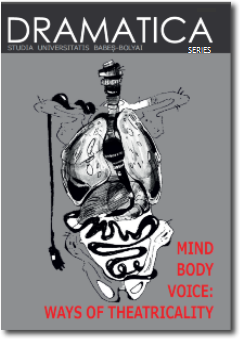BETWEEN DISMEMBERMENT AND (DIS)EMBODIMENT: DEFINING (HYPER)TEXT IN SHELLEY JACKSON’S PATCHWORK GIRL
BETWEEN DISMEMBERMENT AND (DIS)EMBODIMENT: DEFINING (HYPER)TEXT IN SHELLEY JACKSON’S PATCHWORK GIRL
Author(s): Eliza DeacSubject(s): Theatre, Dance, Performing Arts
Published by: Studia Universitatis Babes-Bolyai
Keywords: body/text metaphor; hypertext; Patchwork Girl; (non)linearity; (im)materiality.
Summary/Abstract: The aim of this paper is to explore the shift in the understanding of textuality brought about by the advent of the computer and by its use for the generation of what is generally termed “electronic literature”. The starting point of this analysis is Shelley Jackson’s hypertext fiction Patchwork Girl, which resuscitates and gives a new twist to the old metaphor of bibliographical terminology – the body of text. Written in Storyspace, this hypertext makes deliberate use both of the possibilities and of the limitations of the programme by representing itself as a human body, more specifically as the feminine counterpart of Victor Frankenstein’s monster, whose severed body parts – corresponding to the hypertext’s lexias – are stitched together by the hypertext links. Such works both confirm and challenge the post-structuralist perspective on the text as illustrated most conspicuously in Derrida’s Of Grammatology, in which he proclaims “The end of the book and the beginning of writing”. The hypertextual forms of writing exemplify a breach with the established view of the book as a symbolic form of organic totality; however, their surface of inscription cannot be stripped of materiality as Derrida, despite his insistence on the corporeality of writing, suggests. Therefore, this paper will compare and contrast the book and the hypertext as two mechanisms that have developed specific means of employing their physical characteristics in the production of meaning with the aim of finding the middle ground between the two pitfalls of the discourse on the new media: the technological determinism of media essentialism (Espen Aarseth) and medial ideology (Matthew Kirschenbaum), which regards the electronic text (or any kind of text) as disembodied.
Journal: Studia Universitatis Babes-Bolyai - Dramatica
- Issue Year: 2014
- Issue No: 2
- Page Range: 147-167
- Page Count: 21
- Language: English

